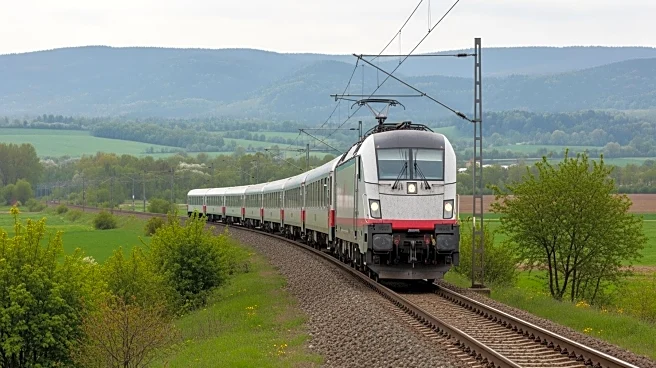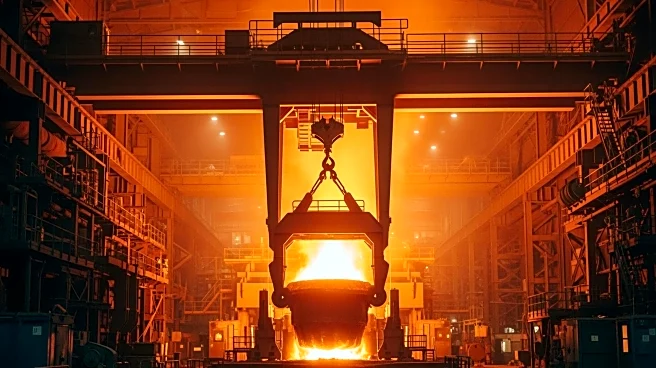What's Happening?
The Indiana legislature has enacted House Enrolled Act 1461, which provides state tax credits for qualified rail expenditures aimed at improving existing infrastructure and developing new projects. This
initiative is designed to support short line railroads and businesses investing in rail maintenance and track expansion in rural counties with populations under 300,000. The law offers up to 50% in state tax credits, including a $3,500 tax credit per mile for rail infrastructure improvements, capped at $9.5 million annually. Additionally, it provides up to $500,000 per new track project, with a fiscal year limit of $5 million. The legislation aims to enhance rail infrastructure safety and encourage the growth of Class II and Class III railroads, which primarily maintain privately-owned tracks without direct taxpayer funding.
Why It's Important?
The tax credits are expected to spur economic development in rural Indiana by making railroads more competitive with other freight transportation modes, such as trucks, which benefit from taxpayer-funded infrastructure. By incentivizing investment in rail infrastructure, the law could lead to improved safety, reduced derailments, and enhanced grade crossings. This initiative is particularly significant for small railroads, which can reinvest savings from maintenance into business growth and customer relationship cultivation. The legislation also aims to create high-paying jobs and foster long-term career opportunities in the rail industry, benefiting local economies and communities.
What's Next?
With the tax credits now in effect, stakeholders like Madison Railroad and Indiana Rail Road are planning to leverage these incentives for infrastructure development and business expansion. Madison Railroad intends to invest an additional half a million dollars in transloading capacity, while Indiana Rail Road is focusing on real estate acquisitions to capitalize on the tax credits in the coming years. The law's impact will be closely monitored by economic development agencies and small railroads, which are expected to benefit from increased investment and growth opportunities.
Beyond the Headlines
The legislation highlights the importance of public-private partnerships in infrastructure development, particularly in rural areas. By leveling the playing field for investment in these communities, the law could lead to broader regional economic benefits. Additionally, the focus on rail infrastructure underscores the need for sustainable transportation solutions that reduce reliance on taxpayer-funded highways and promote environmentally friendly alternatives.













